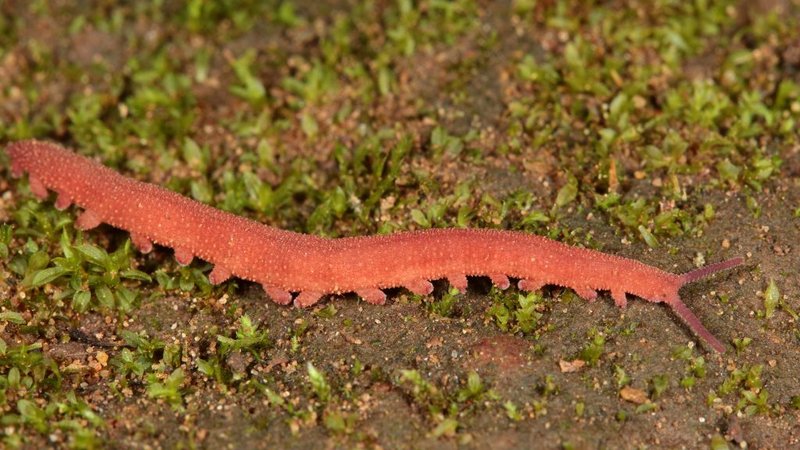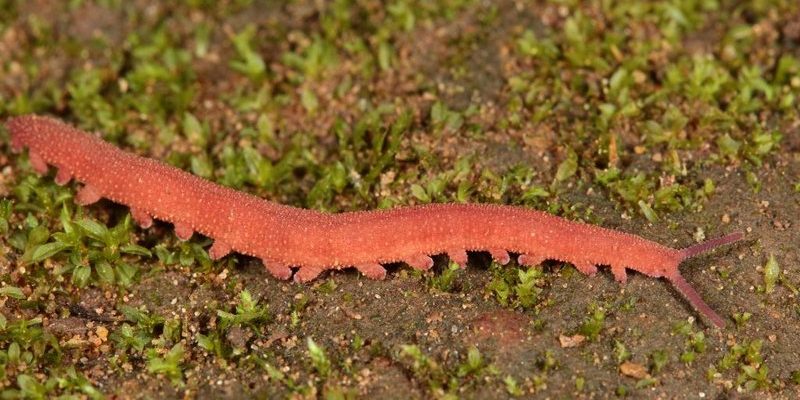
Let’s take a moment to dive into what makes velvet worms special and how they impact the people who know them best. From their biology to their role in the environment, and their significance in the lives of indigenous peoples, we’ll explore how these little invertebrates are more than meets the eye. It’s a surprising blend of science, culture, and deep-rooted traditions worth knowing about!
What Are Velvet Worms?
Velvet worms might seem like something out of a sci-fi movie. They thrive in humid, leaf-littered environments and can be found primarily in Central and South America, Africa, and New Zealand. These creatures can grow up to 10 centimeters long and have a velvety texture, which is where they get their name.
Their most striking feature is their ability to produce a sticky, slimy substance. This slime isn’t just for show; it helps them catch prey. When they sense movement, they shoot out this slime, which entangles their dinners, like insects and small invertebrates. Think of it as nature’s version of a fully loaded trap!
In indigenous cultures, these worms are often seen as connection points between nature and spirituality. They embody the idea that every creature has a role to play in its ecosystem. Understanding velvet worms is often seen as a way to understand the world around us.
Indigenous Knowledge Systems and Their Importance
Indigenous knowledge systems refer to the understandings, skills, and philosophies that develop over generations within a community. This knowledge includes how to use natural resources, manage the land, and interact with various species. These systems are vital for preserving cultural identities and environmental management.
For many indigenous groups, the local flora and fauna, including creatures like velvet worms, form the backbone of their way of life. The stories surrounding these animals often carry important lessons about balance, respect, and harmony with nature.
This knowledge is sometimes passed down through oral traditions, where stories and teachings about specific animals play a crucial role. For example, tales about velvet worms can symbolize resilience and adaptability, reflecting the community’s values and teachings about survival in their environment.
Velvet Worms in Traditional Ecological Knowledge
In many cultures, velvet worms are part of traditional ecological knowledge, which refers to the insights that local communities have about their environment. This knowledge can include where to find these creatures, their behaviors, and their roles in the ecosystem.
The way velvet worms interact with their habitats can provide clues on how to manage forest ecosystems sustainably. For instance, by observing velvet worms, indigenous peoples may learn about moisture levels or what kinds of plants support their populations.
Here’s the thing: when indigenous communities talk about velvet worms, they’re often sharing a deeper understanding of their environment. They see how this slimy creature is affected by climate change or habitat loss, and by tracking their populations, communities can gauge the health of their ecosystems.
Cultural Significance of Velvet Worms
The cultural narratives surrounding velvet worms vary widely from one indigenous group to another. In some communities, these creatures may be featured in folklore that illustrates moral lessons or natural histories. Their unique appearance often inspires stories about creation or the interconnectedness of life.
You might be wondering how this all ties back to everyday life. For many indigenous people, these stories don’t just exist in a vacuum. They inform practices like hunting, gathering, and even crafting traditional medicines. For example, wisdom about where velvet worms are found can guide foragers to gather other plants or organisms they rely on.
Moreover, the symbolism of the velvet worm can reflect broader themes of resilience and adaptation in the face of environmental change, resonating deeply in communities that have traditionally faced challenges regarding their land.
Conservation and Velvet Worms
As climate change and habitat destruction become pressing global issues, the role of velvet worms in the ecosystem takes on new importance. Conservation efforts often involve local communities, emphasizing the need for preserving biodiversity and respecting indigenous knowledge.
You see, velvet worms are sensitive indicators of environmental health; changes in their populations can signal shifts in their habitats. When indigenous communities are involved in conservation efforts, they can provide invaluable insights that science alone might overlook.
This creates a powerful collaboration. Scientists and indigenous peoples can work together to monitor the health of these creatures, ensuring that conservation strategies align with local knowledge. It’s a reminder that protecting biodiversity is about more than just the species—it’s about the stories and knowledge intertwined with them.
Modern Applications of Indigenous Knowledge
In today’s world, there’s a growing recognition of the value of indigenous knowledge systems. Researchers and environmentalists are increasingly looking to local communities for insights into sustainable practices. Velvet worms serve as an excellent example of this shift.
The way these creatures are perceived within indigenous cultures can lead to innovative approaches to environmental management. For instance, understanding their habitat preferences can guide reforestation efforts, ensuring the right plants are chosen to support both velvet worms and other wildlife.
Additionally, the stories and teachings surrounding velvet worms can be integrated into educational programs. Teaching younger generations about these creatures fosters respect for the environment and highlights the importance of biodiversity. More schools and organizations are recognizing that blending modern science with indigenous wisdom can lead to better outcomes for the planet.
Velvet worms might not be the first thing that comes to mind when you think about biodiversity or indigenous knowledge systems, yet they carry profound significance. They symbolize the intricate connection between culture, environment, and survival.
By understanding their role in indigenous practices, we gain deeper insights into how cultures have thrived alongside nature. As we continue to face global environmental challenges, embracing this knowledge can lead to more effective conservation strategies and a richer appreciation for the world around us.
So the next time you hear about velvet worms, remember: they’re not just quirky little creatures. They’re woven into the fabric of indigenous cultures and offer lessons that resonate far beyond their habitats.

